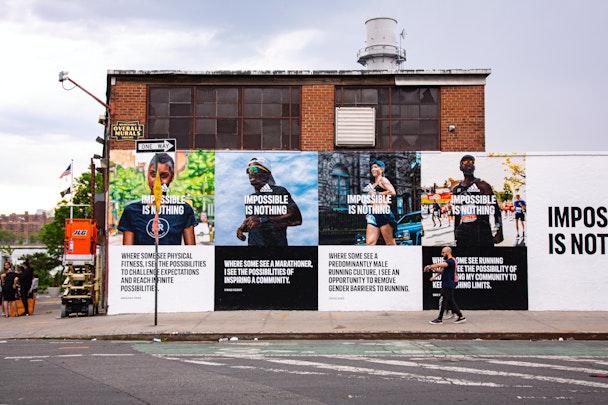Can OOH advertising offer a 100% brand safe environment?
For The Drum’s Out-of-Home Deep Dive, Martin Porter of Dentsu US tells us why he believes outdoor advertising is so valuable at a time when there’s so much bad or misinformed content around.

/ Erdem Tekiner
What do we want? Brand Safety! When do we want it? Now!
Advertisers aren’t exactly picketing in the streets, but the issue of brand safety has increasingly, and rightfully, become a top priority for brands. With the recent ongoing changes in the industry, it has been put firmly under the microscope.
Advertisement
There has been major disruption across Twitter, pushing many advertisers to reconsider the platform – for now. If you are a brand advertiser, you might not be too worried because you know there are plenty of different places to allocate your budget, but brand safety is not only a problem for Twitter, it permeates across multiple platforms and channels.
In a reality where brand safety is at the forefront, out-of-home (OOH) advertising is one format in your marketing mix that always delivers. Because surely, the best place to avoid bad or misinformed content is a platform that is content free.
So how is OOH brand safe? Let’s dive in.
No more bots
OOH measurement is not perfect, but third-party measurement has been proven to determine total audience exposure over time. And one thing that can’t be refuted is that all those impressions are 100% human. There are no bots or fake accounts being measured in OOH.
Advertisement
Unskippable content
The second thing to consider is that ads are unskippable and unblockable. Measurement in OOH has become sophisticated enough that visibility and speed of traffic and a whole host of metrics are taken into account to measure who has the opportunity to see an ad. The humble billboard exists not to deliver content but to deliver an ad message. It’s 100% viewable – there is no below-the-fold, no scrolling past and no blockers in place. Instead, there is an increasing amount of location data that can help target and validate where advertisers can reach specific audiences. We can drill down to zip code and use a variety of behavioral attributes to create heat maps of where groups of people live, work and play.
Context is king
Targeting doesn’t have to be just geo-location based. A large part of why advertisers spend so much on online digital media is the ability to target people, connecting via content. Online there are algorithms that dictate what content you are next to based on contextual clues. And this is where it can all go horribly wrong. How many advertisers would have once wanted to be featured alongside content by Kanye West? Look how quickly that went south.
Contextual relevance is huge and this is where OOH shines bright. Think about how much OOH you see every day. It exists in multiple environments and multiple formats. You might leave your house to go to the office and see a transit stop ad, followed by an ad on the subway and an ad in the elevator of your building. You go to the gym at lunch and there is more OOH. You get a taxi to your afternoon meeting – more OOH in the taxi. Location data and audience insight can help inform where and when your message should pop up because all those environments reach people at different moments in their daily life and the context in which you receive those messages is hugely important.
Suggested newsletters for you
It’s also why I believe that OOH is now more trusted than influencer marketing. Consumers feel more confident that a brand is legitimate and established when OOH is included in their campaigns. Out-of-home is part of the fabric of communities and is trusted because it has been there for so long.
Technology and data are also now allowing us to take this to a level of hyperlocal relevancy. Digital OOH can use data cues to deliver a message that is relevant to the exact time and place of that ad. We can use weather, location, time of day, distance, traffic flows, train timetables – basically any data point that could make that ad relevant at that specific moment. Imagine a liquor brand able to target an ad outside your office telling you it is happy hour, the location of the nearest bar serving its cocktail and even how many seats are still available at the bar. (And yes, this is a reality.)
So, in a world where brand safety is so important, advertisers should all be thinking about OOH as a brand marketing safe environment where contextual cues add relevancy to the message.
Martin Porter is executive vice-president and head of out-of-home at Dentsu US. Check out The Drum’s Out-of-Home Deep Dive.
